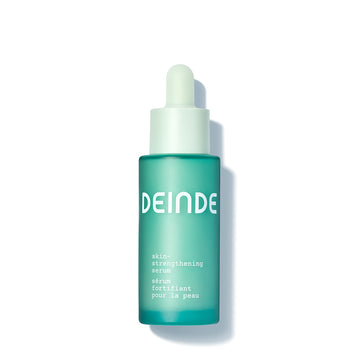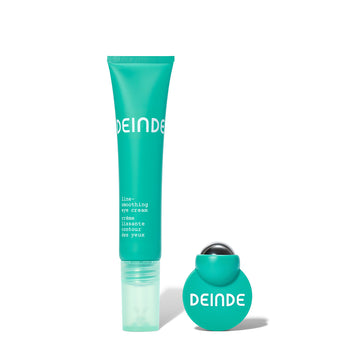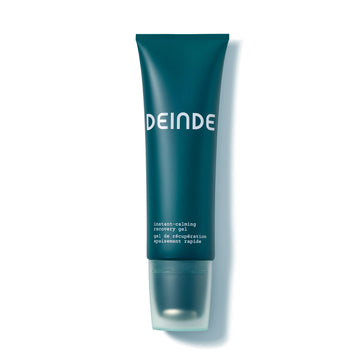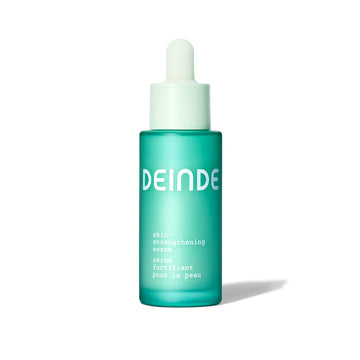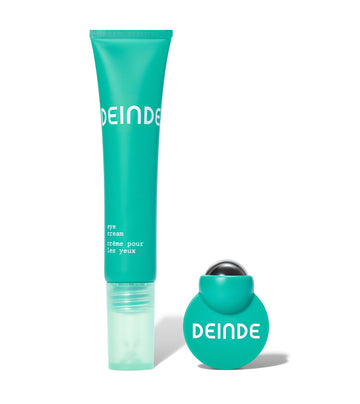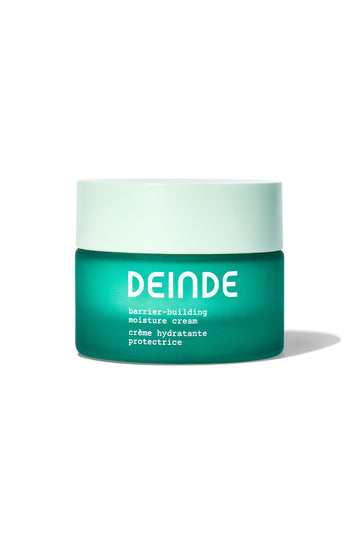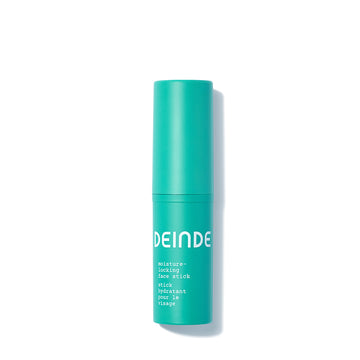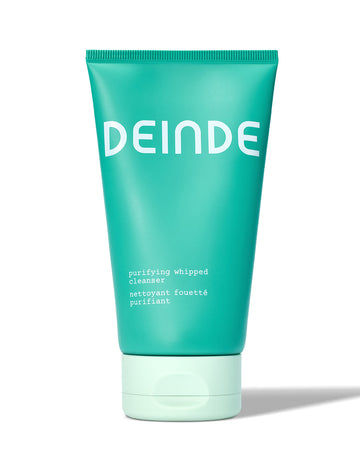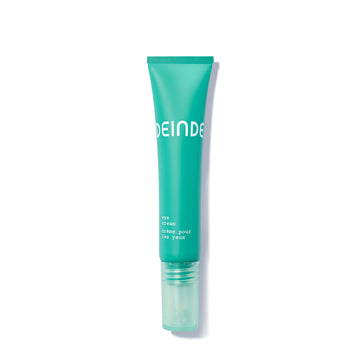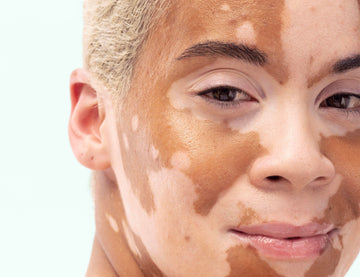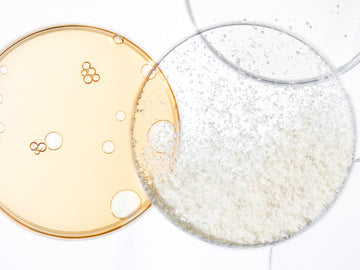
What Is Inflammaging? Causes, Symptoms, and Treatments
The skin is the body’s largest organ (16-22 square feet) and acts as a literal protective barrier to the outside world.
Our skin is a reflection of a life well lived — and the visible aging of skin has been largely considered inevitable to date. At some point, our skin will gently wrinkle, showcase how we spent time in the sun, highlight laugh lines, and lose firmness. With that in mind, it’s worth remembering that the quality and resilience of skin as we age is determined by a range of factors: from how skin processes emotional stress, to how it responds to pollutants, to how it reacts to extensive ultraviolet (UV) exposure.
With that in mind, it’s worth remembering that the quality and resilience of skin as we age is determined by a range of factors: from how skin processes emotional stress, to how it responds to pollutants, to its reaction to extensive UV exposure — not to mention the role of gene expression as well as metabolic and mitochondrial processes, too.
Our skin has the amazing ability to rapidly heal itself after injury, physical trauma, chemical damage, UV exposure or dermal infections. Inflammation steps in at the early stages of healing. It’s essential to remove damaged skin and eradicate microbes that might cause infection. Recent discoveries show that even relatively young adults begin to develop low grade but gradually increasing and prolonged levels of background inflammation. This is inflammaging, which results in visibly premature and accelerated skin aging, such as wrinkles and sagging, due to excessive and unnecessary loss of healthy dermal components like collagen and elastin.
The discovery of inflammaging has led to an excited flurry of peer-reviewed articles that delve deeply into the science. Perhaps the visible aging of skin is not so inevitable after all — especially if we could delay the premature aging caused by inflammaging.
What Is Inflammaging?
Over the past 20 years, with scholars like Campisi and Zhang leading the way, inflammaging has emerged as a breakthrough understanding of the body’s aging process...and with that, how we define lifespan. Inflammaging doesn’t just impact the skin, but rather our entire relationship to inflammation and resulting chronic conditions throughout the body. Studies show that age-related diseases like Alzheimer's disease are inextricably linked to inflammaging thanks to the intimate relationship between cellular senescence, low-grade inflammation, and accelerated aging mechanisms.
Inflammaging is defined as chronic, low-level inflammation that accelerates the aging process. Silent, yet present at some level for everyone, inflammation is an immune response involving key elements of the immune system such as lymphocytes and monocytes. As we age, our capacity to regulate this inflammatory response declines due to the gradual deterioration of the immune system. This accumulation of low-grade inflammation associated with inflammaging adds fuel to the fire, expediting human aging timelines due to its detrimental effects on cellular and molecular processes.
While acute inflammation is a natural and complex biological response to outside stressors, the prolonged state of low-grade inflammation in inflammaging leads to progressive tissue damage and chronic health conditions — for the skin as well as our entire body. For example, inflammaging leads to the overproduction of matrix metalloproteinases (enzymes normally involved in skin remodeling during healing) that weaken the extracellular matrix while degrading dermal collagen and elastin fibers.
Inflammaging creates a state where cells of the skin are unable to operate to their full potential, particularly when exposed to pollutants, stress, etc., due to a vicious and unabated cycle of declining cell function. This includes impaired proliferation of dermal fibroblast cells and the subsequent reduction in matrix deposition. At the same time, skin becomes lazy when clearing out dead and dying cells, instead letting them linger rather than replacing them with regenerated cells.
Why Have I Never Heard of Inflammaging?
While still an emerging topic, inflammaging found recognition among researchers and dermatologists in 2010, building upon years of research. Over the last decade, in-depth scientific research and peer-reviewed pieces have confirmed that inflammaging is a very real process that accelerates aging mechanisms and can be influenced by a range of determinants.
An addition to the skincare lexicon, inflammaging can be seen as an accumulation of well-researched concepts like chronic low-level inflammation and inflammatory feedback loops. While there is still extensive research that can be done investigating the complex relationship between inflammaging and skin, as of 2021, there were around 15 research publications with a dermatology-specific lens.
What Are Some Signs of Inflammaging?
Inflammaging can manifest in a number of ways, with some visual indicators more telling than others. These visual expressions highlight more complex internal processes, like an imbalance of reactive oxygen species or stimulated cytokine and enzyme activity.
→ Wrinkles, sagging, uneven texture
Collagen and elastin are proteins in the extracellular matrix of the dermis that structurally support and give elasticity to the skin. Inflammatory mediators — cytokines such as IL-6 and TNF-α — stimulate a variety of destructive enzymes like matrix metalloproteases that degrade collagen and elastin, shifting to overall tissue loss rather than regeneration.
This visually expresses itself through:
- Wrinkles → Without the fibrous structural support of collagen, skin is apt to wrinkle more easily. This is particularly noticeable around the eyes and mouth
- Sagging skin → Reduced collagen and elastin results in a loss of firmness and tightness
- Thinning skin → Collagen breakdown creates fragile skin that is more susceptible to bruising
- Uneven texture → Declining elasticity leads to an impairment in the skin’s ability to ‘bounce back,’ resulting in a rough appearance and uneven texture. Additionally, the distribution of subcutaneous fat is impacted
→ Hyperpigmentation
Inflammaging and oxidative stress tend to go hand in hand, leading to an imbalance between reactive oxygen species (ROS) and the skin’s capacity to neutralize them with antioxidants. Remember, when the skin becomes locked into a chronically inflamed state, it may have limited capacity to quench ROS production. Excess ultraviolet radiation adds another layer of stress by encouraging the development of age and sunspots.
→ Dry skin
Dry skin is one of the first signs of inflammaging as chronic inflammation leads to increased transepidermal water loss due to the disruption of the lipid barrier, dysregulated epidermal turnover, and reduced levels of water-holding molecules in the dermis. To translate, it becomes exceptionally difficult for skin to retain water. At the same time, natural levels of hyaluronic acid production (this process provides structural support and tissue hydration) are reduced while chronic inflammation prompts the body to produce excess amounts of hyaluronidase, the enzyme that breaks down hyaluronic acid.
→ Rosacea and eczema
Inflammaging disrupts skin barrier functionality by impacting lipid matrix balance, decreasing binding proteins, and weakening cell turnover rates, making the barrier less effective at retaining moisture and protecting against external stressors. When the skin barrier is compromised, it becomes easier for irritants and allergens to sneak into the skin, triggering or worsening pre-existing conditions.
What Is the Relationship Between Inflammaging and Aging?
Aging is a result of external and internal processes — from immune dysregulation (a malfunction in the immune system’s ability to appropriately balance and coordinate its response) to specific epigenetic modifications, to reduced tissue renewal, and to an altered extracellular matrix. It’s a process dictated by changes to the local microenvironment (ex. weakened skin barrier) and an accumulation of stressed cells. Needless to say, aging is complicated — that’s why there’s an entire industry built around anti-aging research and products.
As we age, our cells reach a state of senescence, a gradual deterioration, that makes them prone to damage from inflammatory factors. When skin is chronically inflamed, cellular senescence and related DNA damage is accelerated. Along the same aging timeline, our body's ability to resolve inflammation reduces, causing an imbalance between proinflammation and anti-inflammation. This is where inflammaging steps in, a pro-inflammatory state recognized as a risk factor for accelerated aging and age-associated diseases.
Inflammaging is the result of built-up inflammation — a compounding state considered pro-inflammatory due to:
→ The Accumulation of Damaged Cells (Senescence)
When senescent cells build up, they lose their basic functionality. Without the ability to efficiently divide and replicate, our immune system can become significantly less effective at clearing stagnant cells. Cell senescence can occur via telomere shortening (this is the gradual loss of the ‘protective cap’ of chromosomes) and is a marker of cellular aging.
→ Altered Immune Response
Prolonged chronic inflammation causes cells to work overtime, where they exist in survival mode. When immune cells, like T cells and B cells, are in a state of exhaustion, their response to new stressors is significantly lessened.
→ Cellular Dysfunction
When we exist in a state of chronic inflammation, normal cellular activity is disrupted, impacting the role and function of tissues.
→ Increased Cytokine Production
In the driver’s seat of inflammaging sits increasing levels of pro-inflammatory cytokines. These are signaling molecules key to managing communication within the immune system.
The following cytokines are most associated with inflammaging:
- Interleukin-6 (IL-6) → This is the key cytokine elevated in older adults. IL-6 exists within a positive feedback loop, stimulating production of other pro-inflammatory cytokines, which compounds inflammation
- Tumor Necrosis Factor-Alpha (TNF-α) → Produced by various immune cells as a response to tissue infection, inflammation, and damage. This cytokine promotes inflammation by triggering other immune cells and initiating inflammatory pathways
- Interleukin-1 (IL-1) → Consisting of two isoforms (protein variants) IL-1 promotes inflammation by increasing adhesion of cells lining the blood cells. This makes it easier for immune cells to migrate from the bloodstream to surrounding tissues, enhancing inflammation
What's the Difference Between Acute and Chronic Inflammation?
Inflammation (acute or chronic) is a complex defense mechanism against anything that feels foreign to the body. Inflammaging is synonymous with chronic inflammation — encouraging symptoms like excessive redness, itching and flaring that are associated with several chronic skin conditions.
→ Acute (Transient) Inflammation
Timeline: A short-term response with an immediate reaction. Look for redness, swelling, pain, etc. This is your bruises, your post-surgery recovery, your scarring.
Occurs due to: Trauma or invading pathogens.
What’s Happening: Threats (bacteria, injury, etc.) encourage immune cells to release signaling molecules that alert and notify immune cells to focus on a specific site. At the same time, the body steps into a vasodilation state, dilating blood vessels to increase the flow of nutrients, oxygen, and immune cells — this is where swelling or redness occurs. At the site of inflammation, white blood cells remove any damaged tissue and invading pathogens through phagocytosis. Once the threat is ‘removed’ our body knows to shift to repair mode, producing collagen and elastin to rebuild matrix tissue, forming new blood vessels, etc.
How is it resolved? Naturally. The body knows what it’s doing here. Over time, the body gets worse at managing acute inflammation — that’s why it takes longer for elderly populations to recover from wounds and illnesses.
→ Chronic Inflammation
Timeline: A persistent immune response that can last indefinitely.
Occurs due to: Underlying stress on the body, unresolved inflammatory trigger, or persistent infection. Inflammaging can be a result of lifestyle choices and environmental factors.
Look for: Chronic skin conditions include psoriasis, eczema, etc. Inflammaging is a type of low-grade chronic inflammation that can initially seem much milder than acute inflammation — but instead of disappearing, it progressively increases. Chronic inflammation may affect just a specific area, but can often impact the whole body.
What’s Happening: In a state of chronic inflammation, the body’s immune system is persistently on alert. Consistent attention to inflammation can result in tissue damage due to the ongoing and unabated release of pro-inflammatory cytokines and chemokines (hello again IL-6, TNF-alpha, IL-1). Inflammaging is believed to contribute to a number of age-related chronic diseases like Alzheimer's and diabetes as well as skin-specific conditions like eczema.
How is it resolved? Shifts to a healthier lifestyle, prescription medications, and anti-inflammatory skincare are a start.
How Can I Prevent Inflammaging?
Preventative measures are key when targeting inflammaging — it’s challenging to undo what has been done, but it’s possible to prevent further skin damage. We encourage taking a few steps back and understanding what may be causing inflammaging in your life.
Is your diet high in inflammatory foods?
Do you have trouble sleeping and dropping into REM cycles?
Are you exercising the right way for your body?
How do you handle emotional stress?
When was the last time you truly relaxed?
Do you use sunscreen?
What’s your gut microbiome doing?
Is your skincare rooted in gentle, hydrating products rich in anti-inflammatory ingredients?
The goal to prevent further skin damage is to optimize cell functionality and handle stressors, environmental or internal, with grace. Bringing in soothing, nourishing products, like DEINDE, serves to support healthy skin for the long run. Inflammation is the body’s response to harmful stimuli, and prevention is all about reducing how and when inflammation shows up in your life — there is truly no one size fits all approach.
Studies cited:
- The skin: largest organ of the body | MAG Online Library
- Skin Immune Systems and Inflammation: Protector of the Skin or Promoter of Aging? | ScienceDirect
- Source of Chronic Inflammation in Aging | National Library of Medicine: National Center of Biotechnology Information
- Hallmarks of Aging in Macrophages: Consequences to Skin Inflammaging | MDPI
- Inflammaging and Immunosenescence as Part of Skin Aging — A Narrative Review | National Library of Medicine: National Center of Biotechnology Information
- Cellular Senescence and Inflammaging in the Skin Microenvironment | MDPI
- Inflammaging in skin and other tissues - the roles of complement system and macrophage | National Library of Medicine: National Center of Biotechnology Information
- Inflammaging and Anti-Inflammaging: The Role of Cytokines in Extreme Longevity | Archivum Immunologiae et Therapiae Experimentalis
- Inflamm-aging. An evolutionary perspective on immunosenescence | National Library of Medicine: National Center of Biotechnology Information
- Inflammaging in Dermatology | A New Frontier for Research | Journal of Drugs in Dermatology 20:2


